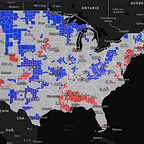The Education Divide: College Students and Mental Health
Exploring the pandemic’s impact on higher education
By Laura Chen
The pandemic’s impact on higher education has introduced a host of issues for students’ mental health, learning, and overall college experience. Since the pandemic caused a nationwide frenzy to self-quarantine and contain infections, the shift from in-person to digital learning forced many college students and teachers to adapt to the challenges of online classes quickly.
Many of these challenges have been linked to increased distractions, low motivation, lack of technology, and proper internet access as well as higher rates of anxiety and stress. A study published in the Journal of Medical Internet Research examined 195 students who self-reported their feelings and mindsets during the first spring of the pandemic. The researchers reported that of these students, 138 (71%) indicated increased stress and anxiety due to COVID. Respondents revealed multiple stressors that triggered anxiety, including the following: “fear and worry about their own health and of their loved ones (177/195, 91% reported negative impacts of the pandemic), difficulty in concentrating (173/195, 89%), disruptions to sleeping patterns (168/195, 86%), decreased social interactions due to physical distancing (167/195, 86%), and increased concerns on academic performance (159/195, 82%)”. These findings demonstrate the negative mental health impact on college students.
The pandemic has also exasperated existing challenges on campuses. Before the pandemic, low-income students of color experienced more challenges navigating college than their white counterparts. In a recent survey conducted by the Student Experience in the Research University Consortium, low-income students of color were more likely to experience more difficulties dealing with student mental health, financial stability, food, and housing insecurity, and ability to adjust to online learning.
The chart below illustrates the unexpected financial impacts caused by the pandemic between low-income, middle-class, wealthy, working-class, and upper-middle-class students. Low-income students were more likely to encounter unexpected increases in spending for technology and living expenses, as well as a reduction of income. The survey reported that “nearly two-thirds of low-income students and 54 percent of working-class students also had a family member that experienced a loss of income, compared to 36 percent of middle-class and 24 percent of upper-middle-class students.”
In a previous Atlas Insights post, mobility data from the Covid Atlas reflected inequities between rural and urban communities that also gave insight into how unequal the pandemic affected students depending on their location. Just as the data suggested inequities between K-12 students in rural and urban communities, it also extends to college students who were displaced from college campuses to move back home, as well as those who attend rural schools as opposed to urban ones.
It’s difficult to capture the specific access impacts college students, many of whom were dispersed to their home communities during the pandemic, but we can start by examining the larger context of quality broadband internet access. Only 63 percent of rural adults say they have access to the internet at home, compared with 75 percent of urban adults. This data suggests that compared to students in urban areas, students in rural areas are more likely to lack the necessary technology to meet the needs of remote learning. Moreover, many rural areas already have high poverty and low graduation rates that are compounded by the marginalization of Black and Indigenous people and other people of color in rural communities over generations.
Moreover, data reveals that while 41 percent of urban adults have a college degree, only 28 percent of rural adults do. Many problems are associated with rural colleges including issues attracting enough specialized faculty and staff, as well as low enrollment rates to fill courses or programs every semester.
Considering the digital divide, we can use the mobility variables on the Atlas to identify which states had the most people working from home full-time. As of April 06, 2020, the last date for which mobility data is available, Midwestern states with more rural counties saw few people home full time on workdays, compared to counties on the coasts. This suggests several factors are at play — rural broadband access and types of jobs available being just a few. These regional trends in mobility behavior have generally been consistent throughout this past winter and spring, as states began opening up and vaccinations allowed more people to return to work outside their homes.
This past year, many universities opted to conduct classes via an online or hybrid model. Now, the rollout of vaccines has opened up plans for resuming in-person classes next fall. Colleges and universities schools must now ensure they can do this safely, with many many mandating that students, professors, and other faculty and staff are fully vaccinated. They should also work to better understand the mental health impacts on their student bodies, and moving forward, establish resources and protocols to better support students in the wake of a pandemic.
Explore vaccinations, cases, and more data uscovidatlas.org.
Laura Chen is a fourth-year undergraduate student at the University of Chicago and a Research Assistant with the US Covid Atlas Project and Center for Spatial Data Science at University of Chicago.
